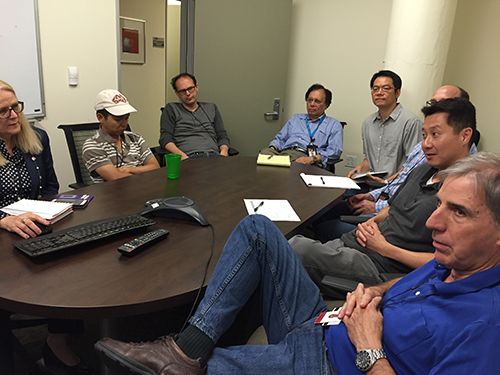Visual History Archive Migrates to New Storage and Archive Manager File System

The new improved SAMFS system will provide improved storage and increased process flow.
“We are moving to improved technology in the hardware and software upgrades identified that will significantly improve the workflow for digitization, archive and preservation of new testimony collections,” said Director of Technology Anita Pace. “The USC Shoah Foundation ITS group is eager to meet the ever-growing demands for managing large and small collections quickly, efficiently and with the quality that represents our work.”
A highlight of the SAMFS migration is the integration of the Kaltura video streaming service to provide audiovisual testimonies to all the Visual History Archive access sites. In addition to planning and preparing for SAMFS migration, the team has been uploading the VHA’s 53,000 testimonies to Kaltura in the past year.
For each of the 240,000 tapes that make up the 53,000 testimonies in the archive, ITS staff are creating three flavor files. These flavors each represent a different bit rate – 464 kilobytes, 864 KB, and 1628 KB – that Kaltura will use when a viewer is watching a video on a smartphone, iPad/tablet, or computer, respectively. Kaltura will deliver the video to the user in the appropriate flavor automatically based on the screen size of the device they are using.
USC Shoah Foundation CTO Sam Gustman said this will allow USC Shoah Foundation to abandon the use of local caches (data storage) at universities. Instead, universities who subscribe to the Visual History Archive will be able to use the regular Internet instead of Internet2 (the separate, faster internet used by universities) to stream the testimonies in the VHA.
The ITS team has been in the planning and preparation stage for the SAMFS migration and Kaltura upload for over a year. There are numerous steps dependent on other processes or systems so each area affected, such as the workstations, servers, virtual LAN, IP addresses, firewall rules, transcoders, just to name a few, must be identified.
The team had to closely unpack the details about each element and make plans for its migration. The goal is that when the old system goes down and the new one goes up everything has been proactively reviewed to enable services to return to their normal state.